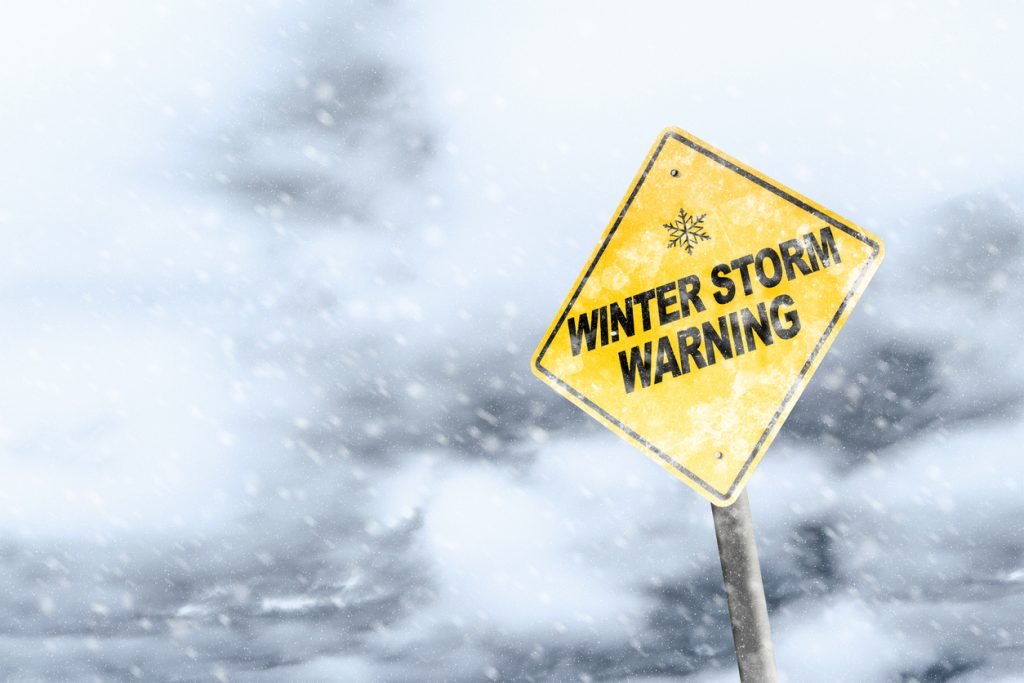Ice Storms

What is an Ice Storm?
An ice storm is a type of winter storm characterized by freezing rain. The raindrops become supercooled while passing through a sub-freezing layer of air, many hundreds of feet above the surface, and then freeze upon impact with any object they encounter. The resulting ice, called glaze, can accumulate to a thickness of several centimeters and cover all exposed surfaces. The accretion of this glaze of ice can cause severe damage.
Natural Disasters Caused by Ice Storms
Ice storms can lead to a series of natural disasters, including:
Power Outages: The weight of the ice can cause tree branches to break and fall on power lines, leading to widespread power outages.
Infrastructure Damage: The accumulation of ice can cause structures like towers, bridges, and buildings to collapse under the added weight.
Road Accidents: Ice storms can make roads and walkways extremely slippery, leading to accidents.
Hypothermia and Frostbite: Prolonged exposure to the cold can lead to hypothermia and frostbite in humans and animals.
Agricultural Loss: Ice storms can cause significant damage to crops and other vegetation.
Equipment Required to Deal with Ice Storms
Dealing with ice storms requires both preventive measures and responsive actions. Here are some essential pieces of equipment:
Generators: To deal with potential power outages, having a generator can ensure you have a continuous power supply.
Insulation Materials: Proper insulation for homes and buildings can help retain heat and prevent pipes from freezing.
Emergency Kits: These should include first aid supplies, blankets, flashlights, batteries, and a battery-powered radio.
Non-perishable Food and Water: In case of prolonged power outages, having a stock of non-perishable food items and water is crucial.
Ice Melt and Sand: These can be used to increase traction on icy surfaces and prevent slips and falls.
Snow and Ice Removal Tools: Shovels, ice scrapers, and snow blowers can help clear ice from driveways, sidewalks, and vehicles.
Warm Clothing: Layered clothing, waterproof coats, gloves, hats, and boots are essential to prevent hypothermia and frostbite.
Vehicle Winterization: This includes using antifreeze, ensuring your car battery is in good condition, and using winter tires for better traction.
Remember, the best way to deal with ice storms is to stay informed about the weather conditions, prepare in advance, and stay indoors during the storm whenever possible.
Impact and Damage: Ice storms can cause extensive damage, including:
- Power outages from downed power lines
- Dangerous driving conditions
- Tree damage and broken branches
- Structural damage to buildings from the weight of ice
Notable Ice Storms in History
1998 North American Ice Storm:
- Location: Canada and the Northeastern United States
- Damage: Over $5 billion in damages, extensive power outages, infrastructure damage, and severe disruption to daily life.
2009 North American Ice Storm:
- Location: Central and Eastern United States
- Damage: Over 2 million people lost power, significant damage to trees and power infrastructure, resulting in billions in repair costs.
2013 Southern Ontario Ice Storm:
- Location: Southern Ontario, Canada
- Damage: Hundreds of thousands of residents lost power, widespread tree and property damage, costing millions in damages.
Authorities Responsible for Ice Storm Assessments
Global Authorities:
- World Meteorological Organization (WMO): Provides global standards for weather, climate, and water assessments.
United States:
- National Weather Service (NWS): Issues forecasts and warnings for ice storms.
- Federal Emergency Management Agency (FEMA): Coordinates response and preparedness efforts.
- National Oceanic and Atmospheric Administration (NOAA): Conducts research and provides information on weather and climate, including ice storms.
- State Emergency Management Agencies: Each state has its agency responsible for local assessments and responses.
Other Countries:
- Canada: Environment and Climate Change Canada (ECCC)
- United Kingdom: Met Office
- Australia: Bureau of Meteorology (BoM)
